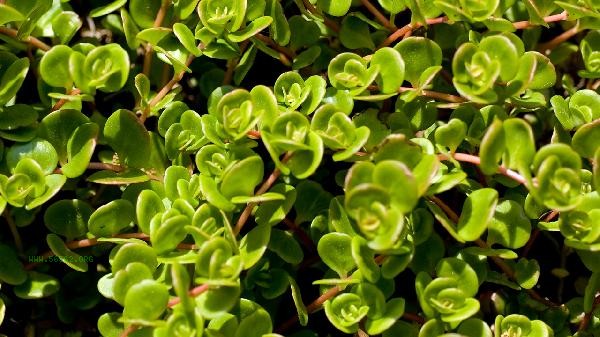The spring and summer seasons are when natural temperatures rise and yang energy is strong. At this time, health should focus on nourishing yang and adapting to seasonal changes. According to the characteristics of the generation of yang energy in the human body in spring, one can choose a balanced and balanced diet, such as using warm foods for nourishment. The balanced diet is suitable for normal people and weak people, such as buckwheat, coix seed, soybean milk, mung bean and apple, sesame, walnut, etc. Supplementary diet refers to a diet cooked with cool food, such as pears, lotus roots, pickled vegetables, lilies, etc. Individuals with yin deficiency and gastric duodenal ulcer disease should experience symptoms in spring. Honey therapy should be used for diet. Honey should be taken on an empty stomach before steaming and cooking. 100ml of honey should be taken three times a day, or 250ml of milk should be added. After boiling, 50g of honey and 6g of white should be added and adjusted before consumption.
These all have the effect of nourishing yin and benefiting the stomach. People with yin deficiency and internal heat constitution can choose rice porridge, red bean Congee, lotus heart Congee, vegetable puree and other foods, instead of sweet, greasy, fried fat, raw, cold and crude foods. Nourishing the brain in spring, people with liver yang hyperactivity are prone to headaches and dizziness, which is the reason why people with spring qi get sick according to traditional Chinese medicine. The dietary prevention method is to eat 250-500 grams of bananas and oranges per day, 100 grams of banana peels, and frequently drink tea brewed with water. In addition, 250 grams of celery and 10 slices of jujube can be used for frying tea in water. Nourishing the Spleen
Nourishing the Spleen
Traditional Chinese medicine believes that spring should be sweet and sour, and nourish the spleen. This is because in spring, when the liver qi is strong, it can affect the temperament, so it is easy to experience symptoms of spleen and stomach weakness. Eating more sour foods can cause liver yang hyperactivity. Therefore, dietary adjustments in spring should choose spicy and sweet foods, avoid sourness, and eat more vegetables and wild vegetables. The climate in spring is comfortable, which is a good time for patients with poor renal function to nourish and cook their kidneys. At this time, taking kidney strengthening prescription and kidney strengthening Tonic Diet has a high effect on renal function damage at the initial stage. Patients should pay attention to life and cooking in spring, and the diet is mainly light and sweet. You can eat light vegetables such as mangosteen, lotus root, Job's tears, cucumber, and melon. A stomach nourishing diet should avoid consuming rich amounts of pork soup, chicken soup, fish soup, beef soup, chicken soup, fish soup, beef soup, spinach, beans, animal organs, and irritating seasonings. These foods have a strong stimulating effect on gastric juice secretion, which can easily form gas and increase gastrointestinal burden. A light and easily digestible diet can be treated with the honey therapy mentioned above. Chronic bronchitis in elderly people is also prone to occur in spring. The sunshine of spring rises, and so does the sunshine of the human body. In order to help the sunshine, attention should be paid to diet, such as eating onions, vegetables, miso, jujube, astragalus, etc., which can reduce phlegm, strengthen the spleen, nourish the kidneys and lungs. Foods such as loquat, pear, lotus seed, lily, jujube, walnut, honey, etc. can help alleviate symptoms. In the early spring season, the climate is still cold, and the cold stimulates the thyroid gland, which can cause functional hyperthyroidism and reduce the body's endurance and resistance by consuming calories. On the other hand, the human body also needs to burn calories to stabilize basal body temperature in order to prevent cold. Therefore, the dietary composition in early spring should be mainly high in calories. In addition to cereal products, you can also choose glutinous rice products and foods such as soybeans, sesame powder, peanuts, walnuts, etc. to replenish energy in a timely manner. The spring climate for disease prevention is warm and cold, with increased microbial activity such as bacteria and viruses, which can easily invade the human body and cause illness. Adequate intake of vitamins and inorganic salts should be included in the diet. Cabbage, rapeseed, bell pepper, tomato, citrus, lemon and other fresh vegetables are rich in vitamin C. Carrots, amaranth and other yellow green vegetables with antiviral effects are rich in vitamin A. They have the function of protecting and strengthening respiratory mucosa and respiratory skin cells. Foods rich in vitamin E should also be eaten to improve the immune function of the human body, such as sesame, green cabbage, cauliflower, etc. If you pay attention to dietary regulation, you can also relieve spring fatigue. The ideal dietary arrangement is: breakfast consumes the most calories, followed by lunch, and dinner consumes the least. Eating potassium rich fruits and juices regularly can also help relieve spring fatigue, as potassium helps maintain cellular hydration. Potassium deficiency can make people feel weak and weak, and can also affect concentration. Raisins, bananas, and apples are all rich in potassium.






Comments (0)
Leave a Comment
No comments yet
Be the first to share your thoughts!